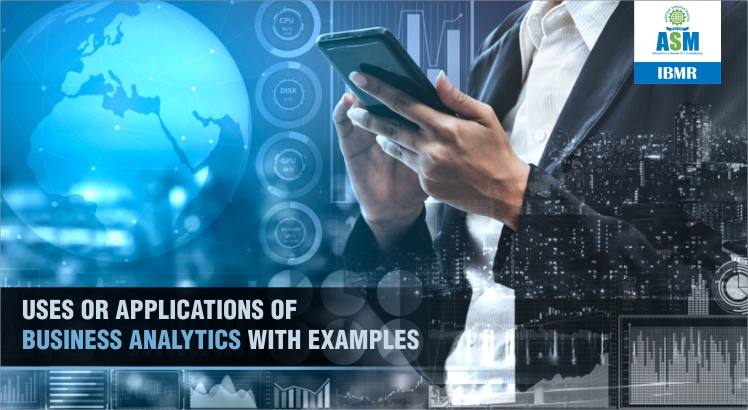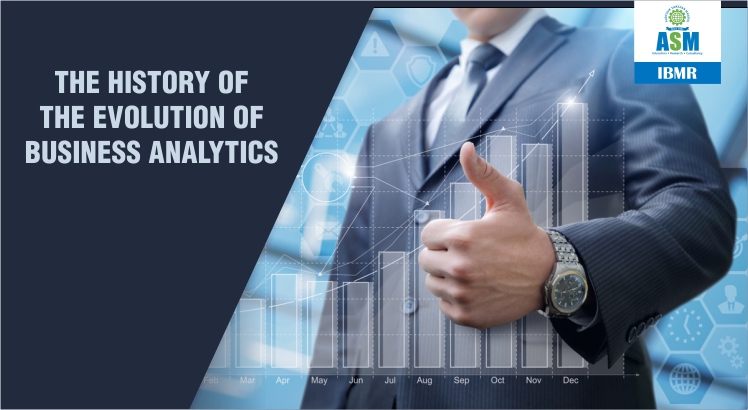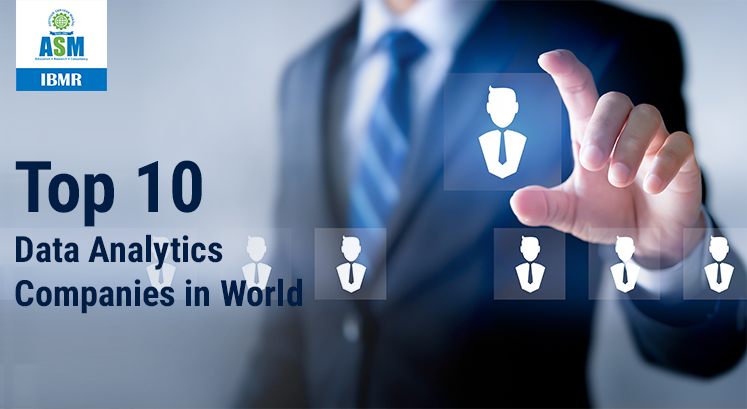- |
- Official Alumni Network |
- Mandatory Disclosures |
- Online Grievance Redressal/Feedback|
Online Grievance Redressal/Feedback
Online students/Faculties can connect to redressal officer via mail and phone.
The grievance will be addressed within 24 hrs and incase it is not done, the grievance can be escalated to the Director.
Students and Faculties can give feedback online via mail mentioned here.
Redressal Officer
Ph. No. : 9527333074
Email ID: webmailibmr@gmail.com
- Extension of Approval (EOA) |
- Letter of Approval (LOA)

A Guide to MBA in Tourism & Hospitality – Scope, Eligibility, Admissions, Fees & Benefits
April 25, 2020
Why Choosing An MBA In Marketing Will Boost Your Career
May 20, 20208 Uses or Applications of Business Analytics with Examples

In todays ever-changing business environment, data has become indispensable. Almost every business, irrespective of its size, is on a lookout for professionals who know how to analyse raw data and draw valuable insights.
Are you wondering why data analytics has become a prerequisite for companies around the globe? It is primarily because of the benefits it offers. Business analytics is a field which has transformed almost every industry from manufacturing and marketing to finance and human resource management.
To help you get a better understanding of how businesses use data analytics, we have created a comprehensive blog with some real-life examples. Before we jump on to the applications of business analytics in different fields, lets take a step bank and learn what precisely the term business analytics means.
Table of Contents
What is Business Analytics?
In simple terms, business analytics is a method used to convert business data into insights. This data is collected from various sources, and processed by experts using different methodologies to draw meaningful conclusions. Today, businesses use high-tech software and tools for this process.
Are you interested in learning about everything about business analytics? This includes its types, benefits, components, and more. Please read our blog.
8 Uses or Applications of Business Analytics
Now that you have a brief idea of what business analytics means, lets look at how business analytics is used in different fields with some real examples.
1. Business Analytics In Retail
When it comes to shopping online or creating an outstanding in-store experience, how do experts use analytics? Is it limited to using customer information to create relevant ads? Fortunately, it isn’t. Targeting customers using data to increase sales is common but not unusual. Now, businesses are taking it a step ahead.
Zara Adding the ‘Fast’ in Fast Fashion
Zara does not have a fancy strategy or even a budget for marketing. Yet, it is one of the world’s leading fast fashion retail brands. So, how has Zara established itself as a frontrunner? The secret lies in making sense of all the data available. While other brands take a minimum of 2-3 weeks to sketch new designs, Zara is able to sketch, design, produce, and send all garments to the racks within two weeks.
One way Zara approaches big data analytics is by collecting data from Instagram, surveys, and social media. All of this data is stored in the central nervous system to understand their customers’ fashion sensibility in every market. Then, it is compiled in its data center, and analysts work 24 hours a day to process data to drive new design releases. By knowing its customers inside out, Zara can produce fashion that becomes a trend as soon as it reaches its stores.
2. Business Analytics in Banking
Once upon a time, customers dreaded visiting banks due to the long waiting time, time-consuming processes, and poor customer service. However, with analytics, a few banks have started enhancing their services to improve the overall experience.
Bank of America A Virtual Step to Serve its Customers
Using its customer data, Bank of America identified that most customers visit the bank daily just to check their transaction histories and get information about upcoming payments. To help out customers with such activities, this bank set up a virtual assistant that helps customers view transaction histories or details on pending bills. So, primarily, it uses data to provide quick answers and save customers time.
3. Business Analytics In Food & Beverage Industry
With the sudden surge in online delivery and the availability of multiple options, restaurants are struggling to retain their customers. However, some fast-food chains have been able to elevate the customer experience digitally without affecting its sales negatively.
McDonald’s From mass-promotion to mass-personalization
McDonald’s has moved on from regular menus to digital screens, where they have complete control of how, when, and what they show to customers. The food and beverage information displayed on these screens is decided based on business analysis. This fast-food company identifies which meals are more relevant, more timely, and have a considerable customer-appeal. Plus, it personalizes the on-screen content to the individual or based on what’s trending. This data-driven menu and personalized offers have helped McDonald’s to hold its position in the market.
4. Business Analytics In Transportation
When it comes to using data in transportation, it is not just limited to analyzing the traffic patterns and finding the fastest route possible. Now, transportation services are using data to take their services up by a notch.
Uber Using Data to Identify Look-alike Trips
Uber uses its algorithms to identify rides that start near a similar pickup point, end near, and are happening around the same time as another ride. This data enables Uber to cater to passengers willing to have a similar journey but by paying less. This is where Ubers Pool feature comes into play. Thanks to this car-pooling service, Uber can serve many people at once, ensure its drivers are occupied, and eventually reduce its overall carbon footprint.
5. Business Analytics in Human Resource Management
The most significant trend in HRM is datafication: using the power of data to transform a range of HR processes. Technological improvements have made it possible for HR departments to access and analyze raw data in ways that wouldnt have been possible so long ago.
Nissan Identifying Talent Using its USP
Nissan is a big name in the world of motorsport. To recruit the new talent, it chose to go to what is known for doing the best: racing. Through an unconventional recruiting medium, Nissan decided to hire people using racing video games. This motorsport company partnered with Sony to create the GT Academy, an annual contest designed to find the best gaming racers. The objective behind this recruitment channel is to find the best racers and turn them into real-life racing drivers. Every year thousands of hopeful racers enter the contest. The winners selected in the past few years are still racing, proving what a useful recruitment channel this has been for Nissan.
6. Business Analytics in Entertainment
With the internet consumption higher than ever before, entertainment businesses are coming up with innovative ways to engage its audience and create a more substantial customer base. The show-biz industry is ready to go all out from creating platform Originals to selecting shows and movies with more than just a mass appeal.
Netflix Using Data to Increase Watch Time
With over 148 million streaming subscribers worldwide as of 2018, Netflix is a force to be reckoned with. To stay ahead of its competitors like Amazon Prime and ensure subscribers dont cancel, Netflix needs methods to increase a users average time spent on the platform. For instance, the company knows if each user watches 15 hours of content each month, they are 75% less likely to cancel. To ensure users complete this time, Netflix uses data to enable post-play, which automatically plays the next episode of a TV show unless the user opts out. This automatic suggestion does not only encourage users to spend more time but also helps Netflix understand audience preferences.
7. Business Analytics in E-commerce
Have you ever spoken about a product with someone and out-of-nowhere see the same recommendation in an app? This does sound somewhat spooky, but it is how e-commerce giants use predictive and behavioral analytics to understand their customers.
Amazon Using Target Marketing to Enhance Customer Satisfaction
Amazon analyzes what items you purchased previously, your online shopping cart and on your wish list, your product reviews and ratings, and your search history. For example, when you add a book to your online shopping cart, similar books purchased by other customers are also recommended. In this way, Amazon uses the power of suggestion to encourage you to buy on impulse to increase its sales and satisfy your shopping experience. The aim is to always leave you with something more than what you expected.
8. Business Analytics in Education
Recently, universities have started using data analytics to gather and update student data profiles using multiple data points. This includes financial information, academic performance, demographics, and more.
The University of Alabama Using Predictive Analytics to Reduce Drop out Rates
Using analytics, this university found that students who asked for copies of their transcripts are at risk of leaving the university. This information helps administrators recognize students who put in such a request and work towards providing them with even better academic and campus resources to ensure they stay.
In Conclusion
These are top 8 applications of business analytics in different sectors. By now, we hope you have a better understanding of how this field is transforming industries across the globe. With the technology evolving faster than ever, business analytics is only going to get bigger, better, and provide opportunities that do not exist today.




